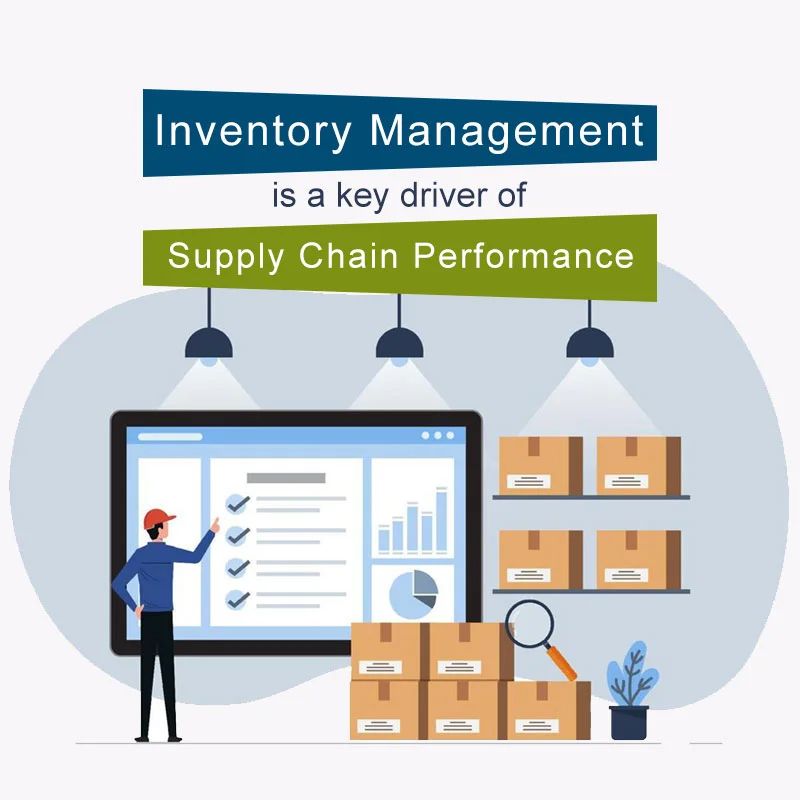Have you ever wondered how inventory management is a key driver of supply chain performance?
Why do you Need Inventory Management?
The short answer is to save time and money. Let’s see all the reasons.
(a) Faster Loading Times:
When inventory is organized and cataloged correctly, loading products for distribution or delivery becomes much faster.
That’s one of the biggest reasons why you need perfect inventory management for your business.
Warehouse workers can find what they need quickly. It means shipments go out faster. In businesses with high demand, this speed makes a huge difference. Ultimately, this quick loading adds more speed to the whole supply chain.
(b) Better Use of Storage Space
You already paid for the inventory, right? Better get the best use of it.
By knowing which products are popular and which are not, companies can arrange items in ways that maximize space.
High-demand items are placed in easy-to-access areas while slower-moving items are stored elsewhere.
This strategic organization reduces the need for extra storage space, cuts costs, makes things a lot faster, and increases the turnover rate of inventory. Most people do it manually. However, there is a small method you can use to get the optimization faster. We will talk more about it later in this article.
(c) Clear Inventory Analysis
Having detailed records of what’s in stock allows businesses to analyze patterns, know more about their goods, understand customer demand, and make smart purchasing decisions.
When inventory data is clear and accurate, companies can identify trends. Confused? Well, one of the trends is to identify which items sell quickly and which don’t. A bit easy peasy but something that you need to know and understand.
This information helps in making better stocking decisions and reduces wasted resources. In this way, inventory analysis supports business growth by ensuring that all the stock levels match customer demand.
(d) Lower Costs and Less Effort
You want to remove overstocking or understocking. You don’t want some of the extra products nor do you want to show “out of stock” to your customer.
Supply chain management is needed for all things. This could help you with everything starting from eCommerce to transport. Having too much inventory ties up money and increases storage costs, while too little leads to missed sales and dissatisfied customers. So, you need a perfect amount of stocks.
(e) Quick Tracking of Stock
Tracking will help you a lot in knowing where goods are and how many goods you have. If you have already a business software or website, you can integrate it.
Inventory management systems often come with tracking features that make it easy to know where any item is in the supply chain. This real-time tracking means that companies can see where goods are at any given moment—whether in the warehouse, on a truck, or in a store.
It depends on the software if they provide it or not.
This visibility allows businesses to answer customer inquiries quickly and accurately and ensures that items are for.
Quick tracking also helps prevent loss and reduces time spent looking for misplaced goods.
You can use the software to quickly see and filter the right data.
(f) Risk Reduction and Compliance
A well-organized inventory system reduces risks like loss, damage, RTO orders, or expired goods.
In many industries, certain regulations require businesses to track their inventory carefully.
For example, pharmaceuticals and food industries have strict inventory control standards for safety and compliance. Having a proper system in place helps meet these regulatory requirements and reduces the risk of penalties. Effective inventory management protects the business by ensuring products are handled safely and legally.
How to Optimize Inventory Management for Supply Chain
Till now we have seen why inventory management is important for supply chain performance. Now, we will see how you can optimize your inventory for supply chain performance.
(a) Study Demand and Supply
Supply and demand are the key drivers for supply chain performance. So, you need to study that.
By analyzing sales data and observing seasonal trends, businesses can stock up on popular items and avoid filling up the inventory with stock of slower-moving goods.
For instance, companies can increase stock for items that are likely to sell well during certain times of the year. To add one more example inside it, one can consider filling up with decorative items during Diwali assuming you’re in that business. Arranging items based on demand patterns helps to keep high-demand items accessible and ready to go. In the end, it will help you increase sales and make the supply chain better.
(b) Just-in-Time (JIT) Inventory
Just-in-Time (JIT) inventory is a strategy where businesses keep minimal stock on hand and reorder products only as needed.
It works for a few companies and businesses. This reduces storage costs and waste but requires reliable suppliers and accurate demand analysis. This becomes quite hard for new companies.
(c) ABC Analysis
ABC Analysis is a technique that divides inventory into three categories based on importance.
- Items in category A are high-value products with lower sales frequency
- While Category B items have moderate value and demand
- Category C includes low-cost items with high turnover.
If you have multiple parts in your inventory, you can fill up the stocks accordingly.
(d) Inventory Management Software (including TMS)
Inventory management is a valuable tool for any business handling large amounts of stock.
As we always recommend adding technology inside your current business, it becomes very important if you’re in the supply chain business.
These technology systems automate tasks like tracking, ordering, reports, modifying, and stock replenishment.
Software solutions, such as warehouse management systems or cloud-based platforms provide real-time visibility into inventory and offer detailed insights into stock movement.
If you’re into transport business, you need Transport Management Software (TMS). It is a useful option for businesses with a large transportation component.
I can optimize routes, manage fleet schedules, make communication easier, reduce costs, and add everything under one dashboard.
This TMS is equipped with features like route planning, vehicle tracking, fuel management, inventory management, and automated scheduling.
By using this TMS, companies can ensure that goods are transported in the most efficient way possible.
If you are from other sectors, you can always use another management software that has Conduct Regular Audits and Maintenance features.
Regular inventory audits help keep stock records accurate.
Physical counts, cycle counts, and spot checks are also important to make sure that the inventory is properly managed.
Conclusion
To conclude, this was all about why inventory management is a key driver of the supply chain process. A properly managed inventory will help you in boosting the entire process. You can not only save time but it will also help you in saving a lot of expenses. Overall, it will help you increase your revenue and make your customers happy with faster deliveries.
We highly recommend implementing tech in this process.

Digital Marketing Executive

